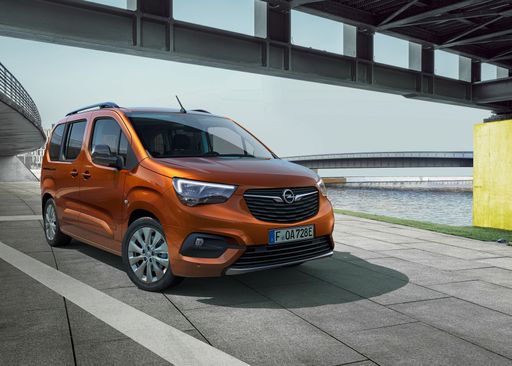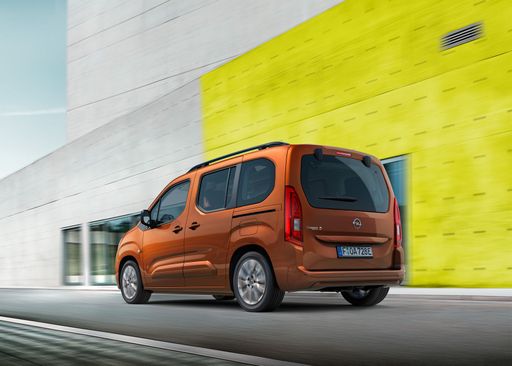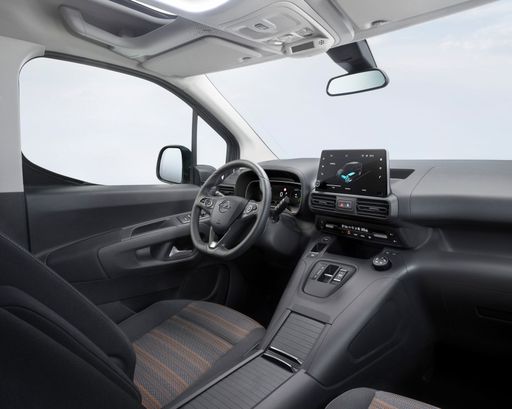Vauxhall Combo vs VW Transporter Transporter – Performance, range & efficiency compared
Both models have their strengths – but which one suits you more?
Compare performance, efficiency, price and space directly: Vauxhall Combo or VW Transporter Transporter?
Costs and Efficiency:
Price and efficiency are often the first things buyers look at. Here it becomes clear which model has the long-term edge – whether at the pump, the plug, or in purchase price.
Vauxhall Combo has a clearly advantage in terms of price – it starts at 24800 £, while the VW Transporter Transporter costs 37500 £. That’s a price difference of around 12667 £.
Fuel consumption also shows a difference: Vauxhall Combo manages with 5.50 L and is therefore clearly perceptible more efficient than the VW Transporter Transporter with 7.10 L. The difference is about 1.60 L per 100 km.
In terms of energy consumption, the advantage goes to the Vauxhall Combo: with 18.50 kWh per 100 km, it’s to a small extent more efficient than the VW Transporter Transporter with 21.90 kWh. That’s a difference of about 3.40 kWh.
As for range, the Vauxhall Combo performs barely noticeable better – achieving up to 345 km, about 14 km more than the VW Transporter Transporter.
Engine and Performance:
Power, torque and acceleration are the classic benchmarks for car enthusiasts – and here, some clear differences start to show.
When it comes to engine power, the VW Transporter Transporter has a convincingly edge – offering 286 HP compared to 136 HP. That’s roughly 150 HP more horsepower.
In acceleration from 0 to 100 km/h, the VW Transporter Transporter is significantly quicker – completing the sprint in 7.40 s, while the Vauxhall Combo takes 11.30 s. That’s about 3.90 s faster.
In terms of top speed, the Vauxhall Combo performs somewhat better – reaching 184 km/h, while the VW Transporter Transporter tops out at 150 km/h. The difference is around 34 km/h.
There’s also a difference in torque: VW Transporter Transporter pulls evident stronger with 415 Nm compared to 300 Nm. That’s about 115 Nm difference.
Space and Everyday Use:
Beyond pure performance, interior space and usability matter most in daily life. This is where you see which car is more practical and versatile.
Seats: Vauxhall Combo offers evident more seating capacity – 7 vs 5.
In curb weight, Vauxhall Combo is evident lighter – 1530 kg compared to 1872 kg. The difference is around 342 kg.
When it comes to payload, VW Transporter Transporter noticeable takes the win – 1259 kg compared to 840 kg. That’s a difference of about 419 kg.
Who comes out on top?
Overall, the VW Transporter Transporter shows itself to be dominates this comparison and secures the title of DriveDuel Champion.
It convinces with the more balanced overall package and proves to be the more versatile choice for everyday use.
VW Transporter Transporter
Vauxhall Combo
The Opel Combo high-roof estate car stands out for its impressive versatility, making it an ideal choice for both families and professionals. Its spacious interior and clever storage solutions ensure a comfortable ride and plenty of room for all your needs. With a focus on practicality and efficient design, the Combo seamlessly combines functionality with modern driving technology.
details @ media.stellantis.com
@ media.stellantis.com
 @ media.stellantis.com
@ media.stellantis.com
 @ media.stellantis.com
@ media.stellantis.com
 @ media.stellantis.com
@ media.stellantis.com
VW Transporter Transporter
The VW Transporter, a versatile favourite among commercial vehicles, combines practicality with modern design. Its spacious interior offers ample room for both passengers and cargo, making it a reliable choice for businesses and families alike. The vehicle's strong build and advanced technology ensure a smooth and efficient driving experience in various conditions.
details

|
|
|
|
|
Costs and Consumption |
|
|---|---|
|
Price
24800 - 36500 £
|
Price
37500 - 60800 £
|
|
Consumption L/100km
5.5 - 5.9 L
|
Consumption L/100km
7.1 - 8.4 L
|
|
Consumption kWh/100km
18.5 - 18.8 kWh
|
Consumption kWh/100km
21.9 - 24.4 kWh
|
|
Electric Range
333 - 345 km
|
Electric Range
56 - 331 km
|
|
Battery Capacity
-
|
Battery Capacity
11.8 - 63.8 kWh
|
|
co2
0 - 155 g/km
|
co2
0 - 220 g/km
|
|
Fuel tank capacity
53 L
|
Fuel tank capacity
55 L
|
Dimensions and Body |
|
|---|---|
|
Body Type
High Roof Estate
|
Body Type
Cargo Van
|
|
Seats
5 - 7
|
Seats
2 - 5
|
|
Doors
4 - 5
|
Doors
4 - 5
|
|
Curb weight
1530 - 1922 kg
|
Curb weight
1872 - 2462 kg
|
|
Trunk capacity
597 - 850 L
|
Trunk capacity
-
|
|
Length
4410 - 4760 mm
|
Length
5050 - 5450 mm
|
|
Width
1848 mm
|
Width
2032 mm
|
|
Height
1812 - 1818 mm
|
Height
1966 - 1985 mm
|
|
Max trunk capacity
2126 - 2693 L
|
Max trunk capacity
-
|
|
Payload
430 - 840 kg
|
Payload
755 - 1259 kg
|
Engine and Performance |
|
|---|---|
|
Engine Type
Electric, Diesel
|
Engine Type
Diesel, Plugin Hybrid, Electric
|
|
Transmission
Automatic, Manuel
|
Transmission
Manuel, Automatic
|
|
Transmission Detail
Reduction Gearbox, Manual Gearbox, Automatic Gearbox
|
Transmission Detail
Manual Gearbox, Automatic Gearbox
|
|
Drive Type
Front-Wheel Drive
|
Drive Type
Front-Wheel Drive, All-Wheel Drive, Rear-Wheel Drive
|
|
Power HP
102 - 136 HP
|
Power HP
110 - 286 HP
|
|
Acceleration 0-100km/h
11.30 s
|
Acceleration 0-100km/h
7.4 - 16.9 s
|
|
Max Speed
135 - 184 km/h
|
Max Speed
112 - 150 km/h
|
|
Torque
250 - 300 Nm
|
Torque
310 - 415 Nm
|
|
Number of Cylinders
4
|
Number of Cylinders
4
|
|
Power kW
75 - 100 kW
|
Power kW
81 - 210 kW
|
|
Engine capacity
1499 cm3
|
Engine capacity
1996 - 2488 cm3
|
General |
|
|---|---|
|
Model Year
2024
|
Model Year
2025
|
|
CO2 Efficiency Class
A, E
|
CO2 Efficiency Class
G, A
|
|
Brand
Vauxhall
|
Brand
VW
|
What drive types are available for the Vauxhall Combo?
Available configurations include Front-Wheel Drive.
The prices and data displayed are estimates based on German list prices and may vary by country. This information is not legally binding.
